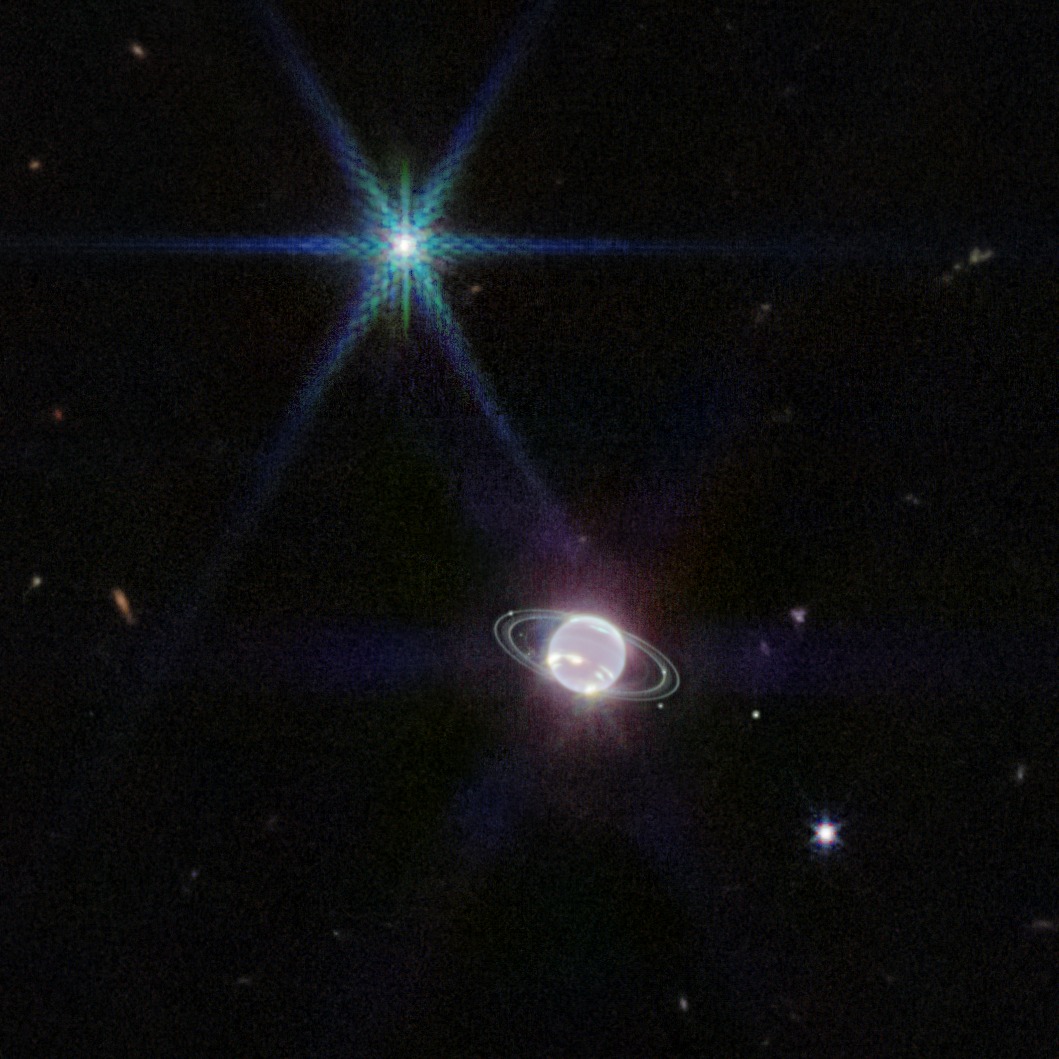Neptune's Supernal Rings Poem by Harley White
Neptune's Supernal Rings
The planet Neptune for god of the sea
was titled from Roman mythology.
His wife Salacia three sons Neptune bore
with Triton most celebrated in lore
both Greek and Roman as merman, then famed
as the largest moon of Neptune so named.
While three decades back faint rings were spotted
though merely a few of those allotted,
by dint of the James Webb telescope view
recently captured along with bright blue
of Triton that's spied in the upper left,
we gain clear look through its camera deft.
Neptune is the planet eighth from the Sun,
ice giant, with Triton the largest one
of satellites natural going round
about its dense mass although duty-bound
to cruise in an orbit that's retrograde,
quite rare in the Solar System parade.
One hundred sixty-five years is the span
of tour in Neptune's empyreal plan
for making rotation sidereal
in journey around star imperial
compared to earthly year passage of time
from new year to the old year's midnight chime.
In visible light Neptune blue appears
as normally pictured in solar spheres
but cannot be glimpsed by unaided eyes
due to its distance related to size,
albeit Webb's Cam in Near-Infrared
rendered it through its glass darkly instead.
What further marvels that planet may grace
‘midst myriad wonders in heavens' space
awaiting disclosure for humans' sight,
if e'er their reality's brought to light,
remain to be seen provided Man can
prove to be more than a ‘flash in the pan'.

Nice poem combining the scientific facts and revelation
This poem has not been translated into any other language yet.
I would like to translate this poem
…combining the scientific facts and revelations with the mythological representation of Neptune.. enjoyed